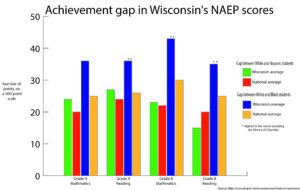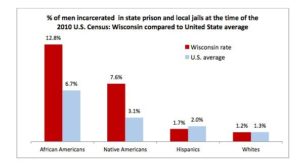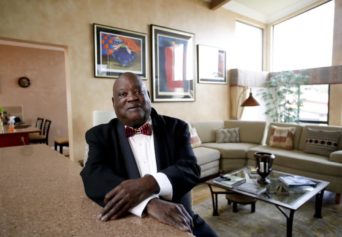
But it turns out Milwaukee is a place that takes aim at the well-being of the Black community in more ways than one.
Milwaukee city, which is the seat of Milwaukee County, has been deemed one of the worst places for Black people by a recent UCLA report.
It turns out that Black residents in the county are facing disproportionately high incarceration rates, massive gaps in the quality of education and deeply segregated communities.
While most Black communities face the same perils, it’s in Milwaukee that these issues are heightened, exacerbated and even mocked by the locals.
Both racial and political lines have been dividing the community for years, with most of the Black residents residing in Milwaukee’s north side while white residents retreated to the south and eventually to the suburbs.
“An old, racist joke among locals is that the city’s 16th Street viaduct bridge is the longest structure in the world, linking ‘Africa to Europe,’ ” writes NPR contributor and former Milwaukee resident Kenya Downs.
That segregation is a part of what drives the other major racial disparities in Milwaukee.
When it comes to education, Black children are forced into school systems that come dangerously close to ensuring their failure.
Throughout the entire city, which has a 40 percent Black population, Black students are suspended at rates that double the national average, according to NPR.
Unfortunately, suspension isn’t the only risk Black children face in the school system.

“The state also has the largest achievement gap between black and white students in the country, and ranks last in reading comprehension tests among black fourth-graders,” Downs added. “Milwaukee has the most black students in the state and is the biggest contributor to Wisconsin’s achievement gap.”
The school system has suffered serious cuts to funding in recent years, which surely hasn’t helped the quality of education children are able to receive.
To make matters worse, the funding problems aren’t the results of unexpected debt or unforeseeable circumstances.
Instead, it’s the result of a 20-year-old school choice program that diverts public tax dollars to private schools through vouchers.
“With 4-out-of-5 black children in Wisconsin living in poverty, an inadequate education can set up the most vulnerable students for failure,” Downs wrote.
For the students who are fortunate enough to make it through an inadequate school system, Milwaukee’s justice system is also set up to keep Black residents disadvantaged and locked in poverty.
Many other states have at least acknowledged racially biased policing and now favor rehabilitation over incarceration, but Milwaukee has yet to make the same transition.

As for Milwaukee County itself, more than half of the Black male residents between the ages of 30 and 40 have served time behind bars, NPR reports.
“The prison population in Wisconsin has more than tripled since 1990, fueled by increased government funding for drug enforcement (rather than treatment) and prison construction, three-strike rules, mandatory minimum sentence laws, truth-in-sentencing replacing judicial discretion in setting punishments, concentrated policing in minority communities, and state incarceration for minor probation and supervision violations,” a report from the University of Wisconsin-Milwaukee explained of the state’s racially biased justice system.
It all paints a disheartening picture that Wisconsin’s Black population, especially in Milwaukee, is facing serious obstacles and discriminatory practices that have resulted in generational poverty and a struggle to access the opportunities and freedoms that America so frequently boasts about.


